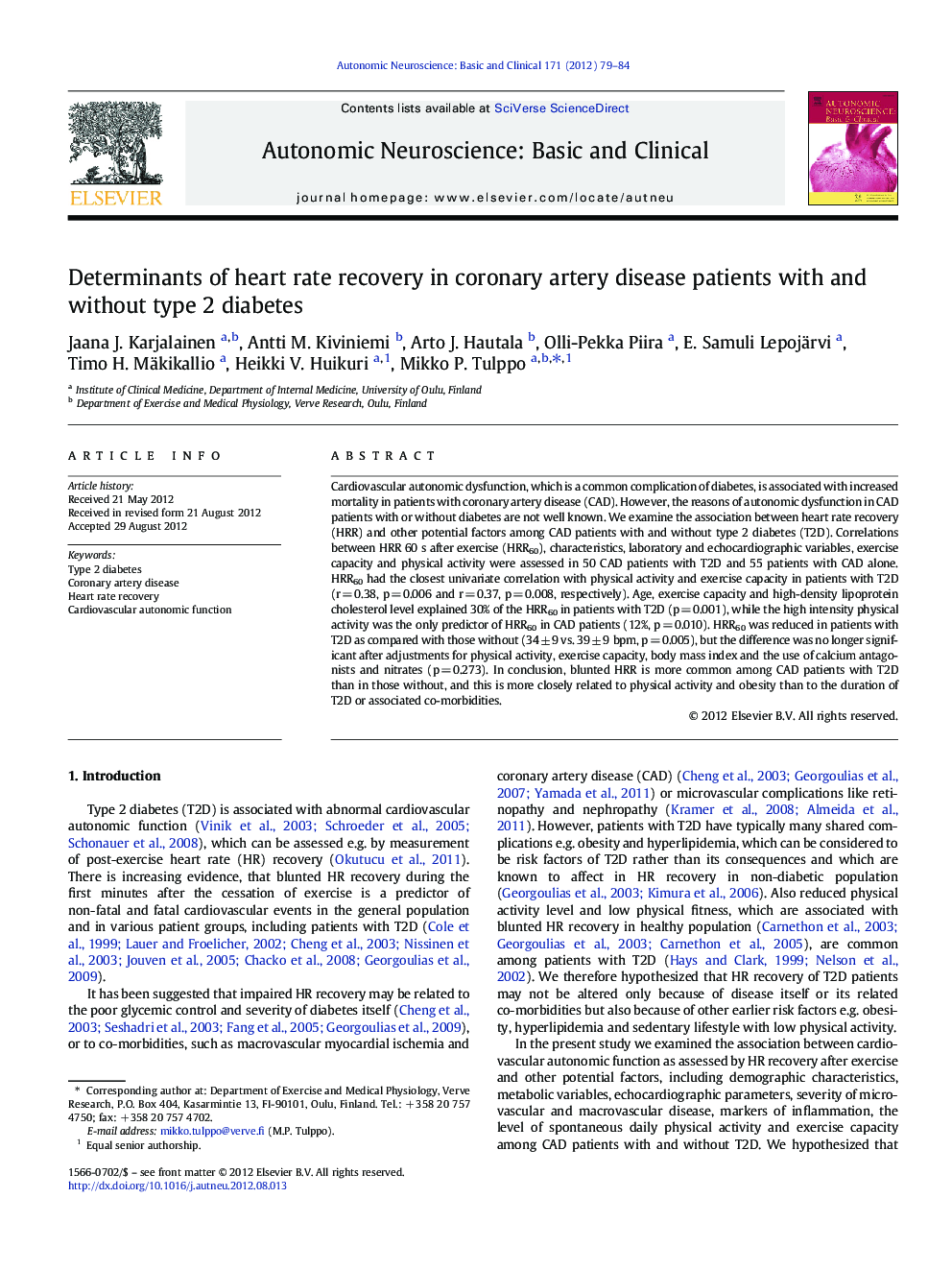| Article ID | Journal | Published Year | Pages | File Type |
|---|---|---|---|---|
| 6004503 | Autonomic Neuroscience | 2012 | 6 Pages |
Cardiovascular autonomic dysfunction, which is a common complication of diabetes, is associated with increased mortality in patients with coronary artery disease (CAD). However, the reasons of autonomic dysfunction in CAD patients with or without diabetes are not well known. We examine the association between heart rate recovery (HRR) and other potential factors among CAD patients with and without type 2 diabetes (T2D). Correlations between HRR 60 s after exercise (HRR60), characteristics, laboratory and echocardiographic variables, exercise capacity and physical activity were assessed in 50 CAD patients with T2D and 55 patients with CAD alone. HRR60 had the closest univariate correlation with physical activity and exercise capacity in patients with T2D (r = 0.38, p = 0.006 and r = 0.37, p = 0.008, respectively). Age, exercise capacity and high-density lipoprotein cholesterol level explained 30% of the HRR60 in patients with T2D (p = 0.001), while the high intensity physical activity was the only predictor of HRR60 in CAD patients (12%, p = 0.010). HRR60 was reduced in patients with T2D as compared with those without (34 ± 9 vs. 39 ± 9 bpm, p = 0.005), but the difference was no longer significant after adjustments for physical activity, exercise capacity, body mass index and the use of calcium antagonists and nitrates (p = 0.273). In conclusion, blunted HRR is more common among CAD patients with T2D than in those without, and this is more closely related to physical activity and obesity than to the duration of T2D or associated co-morbidities.
